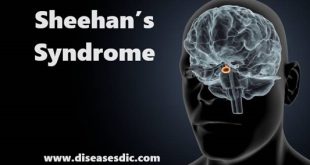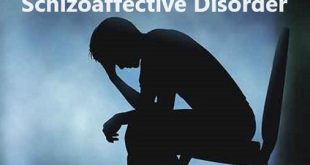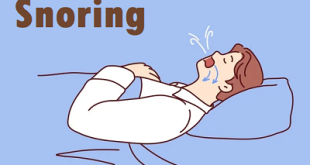What is Separation Anxiety Disorder?
Separation anxiety disorder (SAD) is defined as excessive worry and fear about being apart from family members or individuals to whom a child is most attached. Children with separation anxiety disorder fear being lost from their family or fear something bad happening to a family member if they separated from them. Symptoms of anxiety or fear about being separated from family members must last for a period of at least four weeks to be considered SAD. It is different than stranger anxiety, which is normal and usually experienced by children between 7 and 11 months of age. Symptoms of SAD are more severe than the normal separation anxiety that nearly every child experiences to some degree between the ages of 18 months and 3 years of age.
Epidemiology
Anxiety disorders are among the most common pediatric mental health disorders, with an estimated prevalence of 5 to 25% worldwide. SAD is the most frequently diagnosed childhood anxiety disorder, said to account for 50% of the referrals for anxiety-related mental health treatment. The prevalence of SAD is estimated at 4% in population-based studies, with an increase to 7.6% in pediatric clinical samples. Clinical data suggests that 4.1% of children will exhibit a clinical level of separation anxiety, with approximately one-third persisting into adulthood if left untreated.
The average onset age is approximately 6 years, making it one of the earliest anxiety disorders to present in children. In a United States-based study, SAD was found to have the highest lifetime prevalence at 6.7% of all anxiety disorders when specific and social phobias are excluded. The lifetime prevalence of adult SAD is 6.6%, with 77.5% of the patients reporting onset in adulthood.
Pathophysiology
Neuroanatomically, the amygdala is classically associated with provoking a fear response when stimulated. The amygdala and other fear-related neurocircuitry may share a similar neuroanatomy to anxiety neurocircuitry. The amygdala and its connections to the frontal cortex (perirhinal cortex, ventrolateral prefrontal cortex, anterior insula) have received the most attention. As the amygdala is part of the limbic system, other limbic system structures likely contribute to the development of anxiety, with a specific interest in the hippocampus as it plays an integral role in fear learning and extinction. Functional magnetic resonance imaging (fMRI) studies have found that hypofunction of the prefrontal cortex and anterior cingulate cortex is associated with emotional dysregulation and cognitive dysfunction in those with anxiety.
The activation of fear neurocircuitry, with presumed anxiety neurocircuitry overlap, involves the release of various neurochemicals that lead to sympathetic stimulation. Classically characterized as a “fight-or-flight” reaction, this sympathetic response evolved to be adaptive and for a prompt behavioral response to avoid actual or perceived danger. However, this response can be conditioned to over-activate, leading to pathological anxiety even when exposure to threat is low or should be low. The neurochemicals involved in producing a fight-or-flight response are many and include norepinephrine, epinephrine, cortisol, neurosteroids, and vasopressin. Dopamine likely has a modulatory role in producing anxiety-like behavior. Low activity of postsynaptic serotonin 5-HT1A receptors contributes to pathological anxiety, which has led to the development of pharmacotherapy attempting to modulate these receptors to reduce anxiety.
Causes of Separation Anxiety Disorder
While scientists don’t fully understand what causes SAD, they believe it is related to biological, cognitive, and environmental factors.
Environment
SAD symptoms often appear after a change or stress in a child’s life. Even a positive change can cause a child to feel anxious. Some changes that might trigger or exacerbate SAD include:
- A change in caregiver
- A change in routine
- A traumatic event
- A change in parental availability or discipline
- A change in family structure, such as divorce or separation, a death, birth of a sibling, or parental illness
- Illness
- Lack of adequate rest
- A family moves
- Starting a new school, or returning to school after time away
Parental Mental Health
- Data suggests that SAD is 20 to 40% heritable, meaning that it can be inherited from a biological parent. This suggests that a child is more likely to develop SAD if they inherit certain temperamental and anxious vulnerabilities from their parents.
Parenting Style
Parenting style is linked to attachment theory how our early experiences with attachment affect our mental health and our ability to bond with other people.
SAD appears to be associated with attachment anxiety – anxiety experienced about relationships with people who are important in our lives.
Parenting that is overly critical, overly controlling, or overprotective can interfere with a child’s development of autonomy, and contribute to anxiety disorders. The effects of parenting style are seen both in childhood and after a person enters adulthood.
Temperament
Children with SAD do not like change. When something is new or different, they tend to react negatively and respond with avoidance, fear, or suspicion. They can also have a difficult time self-regulating their emotions when they feel anxious or scared.
Adults with SAD try to avoid confrontation. They also tend to lack self-directedness the ability to be goal-oriented, resourceful, and adaptive to situations.
Economics
How socioeconomic status (SES) affects childhood anxiety is complex and depends on a number of factors including the type of anxiety, and if income is evaluated at an individual household level or a neighbourhood level.
Most children with anxiety disorders come from middle- to upper-income families. In contrast to this, those with SAD tend to come from low-income homes. This suggests that financial stresses within a family may lead to insecurity in younger children.
Symptoms
Although every adolescent experience separation anxiety disorder differently, some common signs of a problem include:
- Refusal to sleep alone
- Repeated nightmares with a theme of separation
- Excessive distress when separation from home or family occurs or is anticipated
- Excessive worry about the safety of a family member
- Excessive worry about getting lost from family
- Refusing to go to school
- Fearful and reluctant to be alone
- Frequent stomachaches, headaches or other physical complaints
- Muscle aches or tension
- Excessive worry about safety of self
- Excessive worry about or when sleeping away from home
- Excessively clingy behavior, especially at home
- Symptoms of panic and/or temper tantrums at times of separation from parents or caregivers
The symptoms of separation anxiety disorder may resemble other conditions or psychiatric problems. Always consult your child’s doctor for a diagnosis.
Complications
Separation anxiety disorder is a serious condition that can affect your quality of life. It can have a stressful effect on your work, school and social interactions. Separation anxiety disorder can lead to mental and physical issues. These include:
- Extreme worry
- Sleep problems
- Depression
- Other anxiety disorders, including generalized anxiety disorder and social anxiety disorder
- Obsessive-compulsive disorder
Risk factors of Separation Anxiety Disorder
Possible risk factors for SAD include:
- A significant stressful or traumatic event in the child’s life, such as a stay in the hospital, the death of a loved one or pet, or a change in environment (such as moving to another house or a change of schools)
- Children whose parents are overprotective may be more prone to separation anxiety. In fact, it may not necessarily be a disease of the child but a sign of parental separation anxiety as well parent and child can feed the other’s anxiety.
- Children with separation anxiety often have family members with anxiety or other mental disorders, which suggests that a risk of getting the disorder may be inherited.
- Insecure attachment to parents or caregivers
- Stress
- Other anxiety disorders, like panic attacks, social anxiety disorder, phobias, or agoraphobia
- Children with SAD may also have obsessive-compulsive disorder (OCD) or depression.
How to diagnosis Separation Anxiety Disorder?
An adult with separation anxiety is typically diagnosed by a mental health expert like a psychologist or psychiatrist. Adults rarely receive a distinct diagnosis for separation anxiety because it is frequently a subtype of generalised anxiety disorder.
The diagnosis typically follows a thorough examination of the patient’s medical history, present symptoms, and any known triggers or stressors. To assess and subsequently diagnose separation anxiety in adults, a combination of the symptoms reported, the data acquired during the clinical interview, and any possibilities for observation would be required.
The mental health expert will probe deeply into the patient’s current symptoms and past medical history during the diagnostic process. They might employ evaluation instruments and standardised tests like the GAD-7, which measures generalised anxiety disorder.
The DSM-5 (the Diagnostic and Statistical Manual of Mental Disorders) lists the diagnostic criteria for Separation Anxiety Disorder and the mental health professional will decide whether or not the individual meets these criteria.
At least three of the following criteria must be met:
- Recurrent excessive distress when anticipating or experiencing separation from major attachment figures or from home.
- Persistent and excessive worry about possible harm to major attachment figures or losing them including injury, illness, disasters or death.
- Persistent and excessive worry about experiencing a problematic event such as being kidnapped, getting lost, becoming ill, or having an accident that would cause separation from their major attachment figure.
- Persistent reluctance or refusal to leave their home, go to school, work or anywhere else.
- Persistent and excessive reluctance or fear about being alone without their major attachment figure present.
- Persistent refusal or reluctance to sleep anywhere other than home or sleep without being near their major attachment figure.
- Regular nightmares with separation as a theme.
- Repeated complaints of physical symptoms including headaches, nausea, stomach aches and vomiting when separation from a major attachment figure is anticipated or occurs.
The following criteria must also be met:
- The anxiety, fear and avoidance are persistent and have lasted for at least six months in adults.
- The disturbance is causing clinically significant impairment and distress in occupational, social and other important areas of life.
- The disturbance cannot be otherwise explained by other mental disorders such as refusal to leave home due to autism spectrum disorder, agoraphobia, or delusions or hallucinations caused by other psychiatric conditions.
Treatment for Separation Anxiety Disorder
Psychotherapy, medication, and parent counselling are three interventions that have been found to be effective for the treatment of separation anxiety disorder, particularly in combination.
Counselling
The preferred method of treatment for mild cases of separation anxiety disorder is counselling rather than medication. Treatment plans should combine different modalities for kids who either have not improved with counselling alone, have more severe symptoms, or have other emotional issues in addition to separation disorder.
- Cognitive therapy is used to teach kids how to think, improve their capacity for problem-solving, and help them keep their attention on the good things going on even while they are experiencing anxiety. Children may be more receptive to learning coping mechanisms, including playing games, colouring, watching television, or listening to music, if they learn to concentrate on more upbeat ideas and feelings.
- Behavioral modification therapyis an intervention that directly addresses the behavioral symptoms of separation anxiety disorder. This intervention tends to be more effective and less burdensome to the child if behaviors are addressed positively rather than negatively. The child is not usually punished for continuing to suffer from symptoms but rewarded for small victories over symptoms.
Relaxation techniques
Even toddlers can be taught simple relaxation techniques, such as imitating their parents, taking deep breaths, or slowly counting to 10. Relaxation techniques such as envisioning themselves in a relaxing situation may be considered more appropriate interventions for older children, adolescents, and adults.
Medications
If counselling is unsuccessful or if the children’s symptoms are so severe that they are almost incapacitating, medication is seen to be a potential option. Separation anxiety disorder has been successfully treated with selective serotonin reuptake inhibitors (SSRIs). Tricyclic antidepressants (TCAs) and benzodiazepines are medications that are occasionally taken into consideration when SSRIs either don’t work or are poorly tolerated to treat separation anxiety disorder. The least popular class of drugs for children with separation anxiety disorder is benzodiazepines.
Prevention of Separation Anxiety Disorder
There’s no sure way to prevent separation anxiety disorder in your child, but these recommendations may help.
- Seek professional advice as soon as possible if you’re concerned that your child’s anxiety is much worse than a normal developmental stage. Early diagnosis and treatment can help reduce symptoms and prevent the disorder from getting worse.
- Stick with the treatment plan to help prevent relapses or worsening of symptoms.
- Seek professional treatment if you have anxiety, depression or other mental health concerns, so that you can model healthy coping skills for your child.
 Diseases Treatments Dictionary This is complete solution to read all diseases treatments Which covers Prevention, Causes, Symptoms, Medical Terms, Drugs, Prescription, Natural Remedies with cures and Treatments. Most of the common diseases were listed in names, split with categories.
Diseases Treatments Dictionary This is complete solution to read all diseases treatments Which covers Prevention, Causes, Symptoms, Medical Terms, Drugs, Prescription, Natural Remedies with cures and Treatments. Most of the common diseases were listed in names, split with categories.







